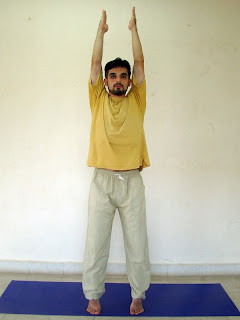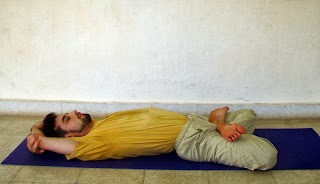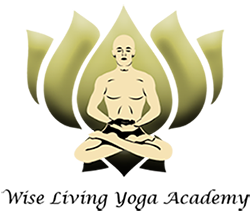29 Sep Yoga Education – Part 2
How does one select the right type of Asanas?
The Yogi borrowed heavily from Nature because of his proximity to forests, mountains and caves. However he was judicious in his selection. He preferred to learn from the relaxed crocodile rather than from the rabbit or the inquisitive dog (although these postures are there in Yoga nowadays). He imitated certain birds, animals and natural objects. The selection of postures (Asanas) was based on an overall approach to the physical, mental and moral well-being of an individual.
Methods
The Asana practices were carried on for a longer duration. This provided a chance for prolonged mental participation, synchronization and direction. Thinking precedes action and unless the mind is well under control, merely developing the body may later weaken it. The Yogis therefore took into account the psychological aspect of our personalities. The well-known physiologist Matveyev said: “The Yogis demonstrate pronounced endeavour to consciously direct the activity of certain organs, even of certain glands and internal secretions and maintain that they scored along the line.”
Right and Wrong Directions
 |
| Talasana or Palm Tree Pose (focus on the synchronization of breath and movement) |
With the practice of the third step, the Asanas, we overcome unsteadiness, inertia and other impurities. We might even perfect the steadfastness (Siddhi) that involves the mind even further (Samapatti) but this is an exception. We must not aim at too many things at the start. In fact, each step of the Eight-fold Path (Ashtanga) has only a certain strength to impart.
All that we should concern ourselves with, during the Asana practice, is imparting a wider meaning to our activity. The act of breathing is a good aid in holding our attention. Also directing our mind to different parts of the body. Synchronization of breathing with movements of the body during the practice of Asana in a fixed measure was introduced by Shri Yogendraji in 1917 and is now popular among many Yoga teachers and schools.
There is, in fact, much to learn from Asanas. However, a practitioner must possess:
(i) a strong commitment,
(ii) a disciplined mind,
(iii) introversion and tranquility when one begins the Asana practice, and
(iv) synchronization of breathing.
If one has achieved the above conditions, one will succeed in uplifting one’s thoughts to a higher level of consciousness.
Steadiness
We have just discussed that steadiness is vital to the performance of an Asana. How do we achieve this steadiness? Secure the feet correctly, sit upright, have a good base (Sthirata), avoid hurry, agitation and speed. Cultivate solemnity, commitment, decisiveness, etc. To remain for a certain length of time without agitation is in itself an achievement.
The next step is the achievement of relaxation while carrying out conscious movements. You will ultimately reach a state of profundity or the so called “let go” sensation. Full composure and control is necessary. One must not collapse into a final position. One must consciously seek out areas of relaxation – some sensitive zones in the body.
 |
| Matsyasana or Fish Pose (focus on relaxation through awareness of the movements of the abdomen while breathing) |
Relaxation
The state of relaxation is very valuable in therapy. Coordinated breathing aids in bringing the mind to this state. Otherwise, the chances are that the mind strays away from the Asana into other areas. You must lead your mind to areas such as the abdomen in Matsyasana (Fish Pose) and create the sensation of “let go”, or the chest in Talasana (Palm Tree Pose). This directing of attention and concentration on breathing will achieve a good deal of relaxation. These poses are many other Yogic techniques are very well examined during our Yoga Certification Course in Thailand.
When one works systematically one experiences a change in one’s thoughts, behavior, action etc. Usually these conditions come in a flash and are lost. There are usually so many external distractions and constraints that restrain a person from achieving relaxation. In Yogic Asanas you are with yourself and can perfect these attitudes by self-training. In the end you can achieve a perennial state of stability (Ananta Samapatti).
The postures you do every day need not be very difficult, but your attitude while doing the postures must be sustained. You should thus understand the deeper significance of the Yoga postural training: steadiness (Sthira) and contemplation on fixity (Anantasamapattibhyam).
Photos: taken on location – The Yoga Institute of Santacruz, India. Daniel Fonseca performs two simple, but effective, postures advocated by Shri Yogendraji for a daily course of Yoga postural training.
Source:
Excerpts of the book Yoga and Total Health in Schools – published by The Yoga Institute of Santacruz.

No Comments